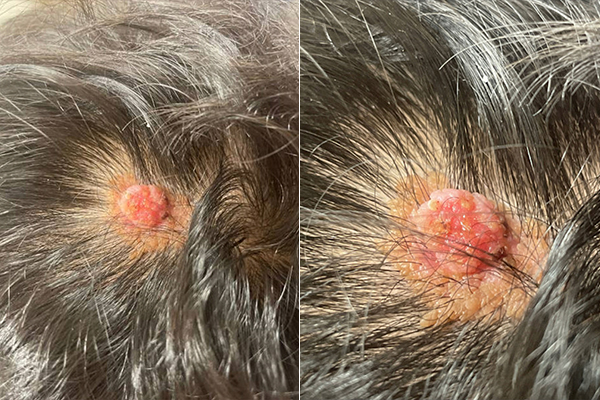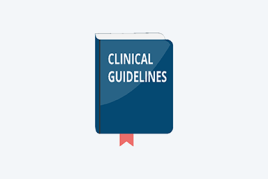Race for the Case answers
Diagnose this new case by Madeleine Medvedev, MD, and Alejando Barrera-Godínez, MD, IFAAD

A 22-year-old male patient with no significant past medical history presents to clinic with a “spot on the scalp.” It was present since birth, though over the past few years has been growing and bleeding. Initially, it was not bothersome though more recently can be tender on palpation. The patient denies a personal or family history of skin cancer.
1. Biopsy showed a typical “fjords and fronds” appearance. What other cell type would be present (usually within the cores of the fronds)?
Answer: Plasma cells
2. Based on the diagnosis, within what primary lesion did this occur?
Answer: The diagnosis is a syringocystadenoma papilliferum and occurred within a nevus sebaceous.
3. What is the most common secondary neoplasm that can occur within this patient’s primary lesion?
Answer: Trichoblastoma
4. What is the main histologic differential diagnosis of this lesion? On histology, it would show a maze-like configuration and usually occurs on the vulva/perineum.
Answer: Hidradenoma papilliferum
5. If this lesion was not removed via biopsy for this patient, is there a high likelihood of malignant transformation?
Answer: No
Fall 2025 winner
The winner of the fall 2025 Race for the Case is Haowei Han, DO, a PGY-4 at St. John's Episcopal Hospital. Dr. Han correctly identified syringocystadenoma papilliferum in our latest Race for the Case and provided the most accurate responses in the quickest time. Congrats to Dr. Han!
If you win Race for the Case you will be eligible for a $100 Amazon gift card and will be invited to submit your very own Race for the Case!
Download every Boards Fodder in PDF format.
Keep up with current dermatologic literature and how to use the information in practice.
Access the archive of Directions in Residency.
 Find a Dermatologist
Find a Dermatologist
 Member directory
Member directory
 AAD Learning Center
AAD Learning Center
 2026 AAD Annual Meeting
2026 AAD Annual Meeting
 Need coding help?
Need coding help?
 Reduce burdens
Reduce burdens
 Clinical guidelines
Clinical guidelines
 Why use AAD measures?
Why use AAD measures?
 Latest news
Latest news
 New insights
New insights
 Physician wellness
Physician wellness
 Joining or selling a practice?
Joining or selling a practice?
 Promote the specialty
Promote the specialty
 Advocacy priorities
Advocacy priorities
